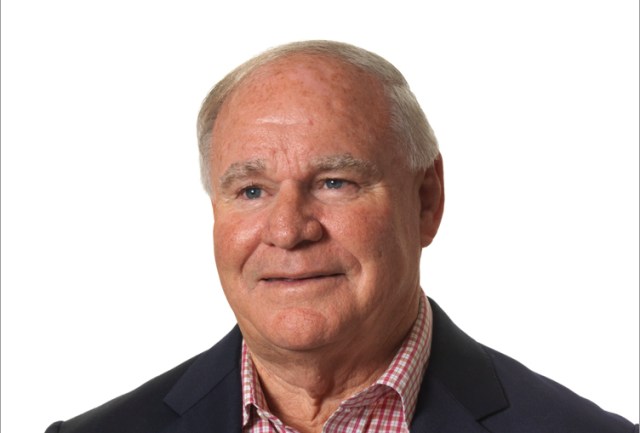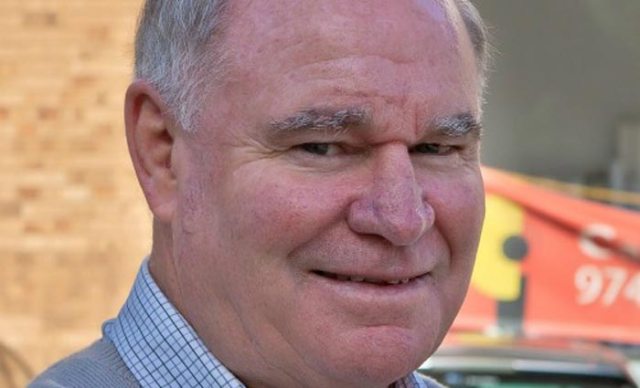
This article first appeared in the May 2025 issue of Australian Printer
There’s no one in this industry quite like Keith Ferrel. At 75 years of age this year, he is one of the few remaining seniors that works full- time – and he has no plans of stopping anytime soon. His peers describe him as a visionary; a calculated risk-taker; an extremely hardworking but humble person; a gentleman that wants to make a difference in the printing world.
Ferrel has also experienced it all in business – from helping start up a company in printing with no prior print knowledge, to being held at gunpoint when he demanded payment from a procrastinating client, visiting an international client during a coup, and seeing one of his sites impacted by tragedy.
The business, Cactus Imaging, is a huge part of his life, and having helped run it from its inception, he says it is one of his prides and joys. Ferrel, who is originally from New Zealand, has not only taken Cactus Imaging from strength to strength, but he has also come a long way since his foray into the world of print.
Widely recognised in Asia Pacific as one of the most influential people in the print industry, Ferrel has several accolades under his belt. A FESPA Hall of Fame inductee, Ferrel was also the 2014 FESPA World Printer of the Year and the 2021 Media Super Lifetime Achievement Award winner.
In addition, Ferrel has constantly topped the ProPrint Awards list since 2022 – he won the Printer 50 category in 2022, came runner-up in 2023, and topped the list again in 2024.
“People think I’m a visionary but to me, it’s just business sense. You’ve got to have foresight and take advantage of opportunities; otherwise, you’re just wasting time. But you’ve got to know when to jump off the bus and jump back on another one,” Ferrel said.
Early beginnings
Ferrel co-founded Cactus Imaging in Auckland in 1992, together with Warwick Spicer. The duo met when Spicer was CEO of the now-defunct Auckland Star, while Ferrel was group sales director. The idea of starting a business emerged when Spicer was intrigued by electrostatic printing technology at a tradeshow when looking to buy a newspaper press. He found the technology to have commercial potential and approached Ferrel with the proposition.
Ferrel bought into the idea and they both set the business up in Auckland. At that time, Ferrel was only 42 years old, and Spicer was 54 – with no prior printing experience whatsoever.
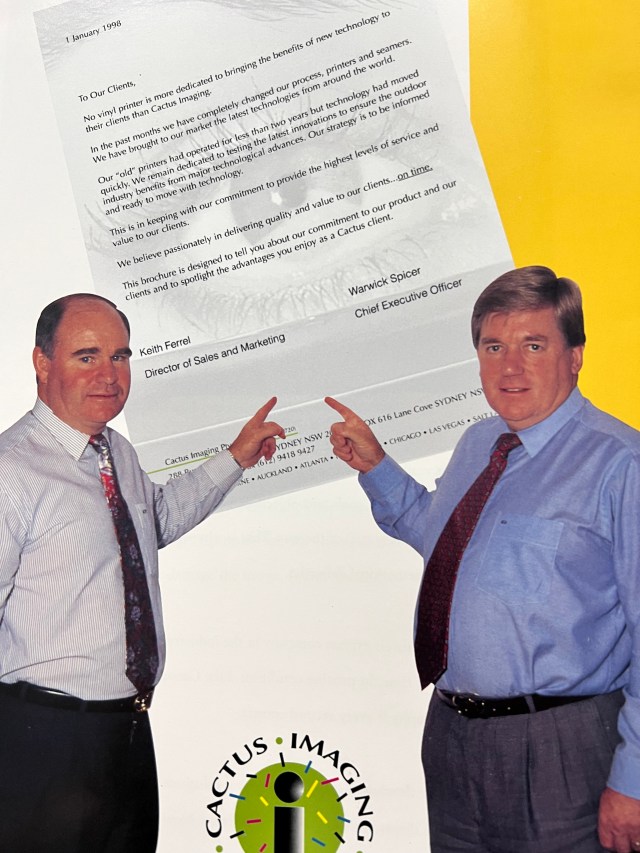
“We ended up buying an electrostatic printer, which was the first of its kind in the southern hemisphere, and potentially the first outside of the US,” Ferrel said.
However, after 12 months of running the company, the pair realised the New Zealand market alone was not big enough for what they were anticipating for the business. So, they made the big move to Sydney in 1993 and set up the sales arm of Cactus Imaging Australia. Their New Zealand operations was printing what they were selling in Australia.
“We got to the stage where we were selling more in Australia and printing in New Zealand, than printing and selling in New Zealand,” Ferrel said.
They also saw the potential for paper billboards, which was very common back then, to be replaced by vinyl. After researching Vutek vinyl printing technology in 1995 and meeting Dan Griesemer, whose company, Impact Imaging, was doing grand-format vinyl printing, the pair decided to play in that space – which was largely dominated by MMT in Australia.
However, as Cactus Imaging didn’t have sufficient funds for a vinyl printer, Spicer and Ferrel outsourced production to Impact Imaging. Very quickly, the vinyl billboards business skyrocketed, and the duo were soon looking to own their own 3.5m Vutek Sprayjet in Australia.
Griesemer took a 50 per cent stake in Cactus Imaging and helped Spicer and Ferrel establish a full-scale production plant at Lane Cove, Sydney, in 1996.
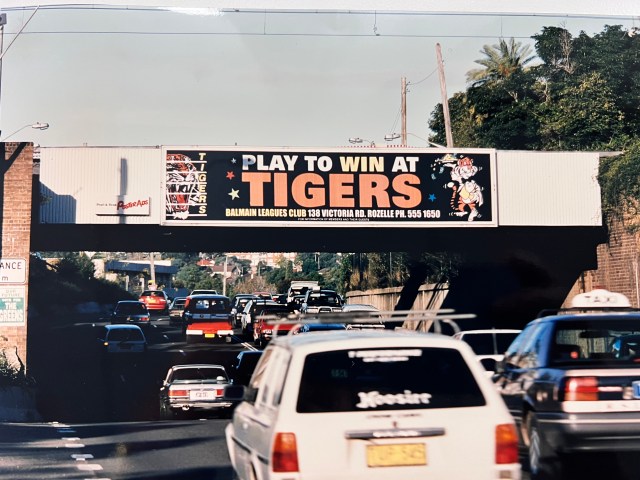
With the new Vutek Sprayjet installed in Australia, Cactus was able to introduce seven-day turnarounds.
When we were printing on vinyl billboards in America, turnarounds were between six to eight weeks. But, when we got a machine here, we could turn them around in a week. It was a game-changer,” Ferrel recalled.
“I still remember the very first billboard that we printed – for Balmain Rugby Leagues Club. It was about an 8m by 3m billboard, and it took nearly six and a half hours to print.”
Have bag, will travel
Cactus Imaging’s expansion into Asia followed shortly when it purchased machinery through the now-defunct Israeli-based NUR. Cactus owned the second NUR Blueboard HiQ Plus machine in the world, which was also an Asia Pacific first.
The NUR rep at that time, suggested Cactus Imaging go offshore to which Ferrel replied, “We’re only just starting to make headway here, let alone go anywhere else”. The rep then suggested a joint venture.
Austrade helped Ferrel and Spicer organise appointments with potential joint venture partners right through Asia, including India, Pakistan, and the Middle East. In 2000, they eventually signed a deal with Chennai’s Bee Vee Graphics to set up what Ferrel said was India’s first digital grand-format operation.
“It just went off from there. Then came about this opportunity in Pakistan with a company called Lakson Tobacco, through Philip Morris. We thought we could service Pakistan using our Indian factory, not knowing the feud between India and Pakistan,” Ferrel said, candidly.
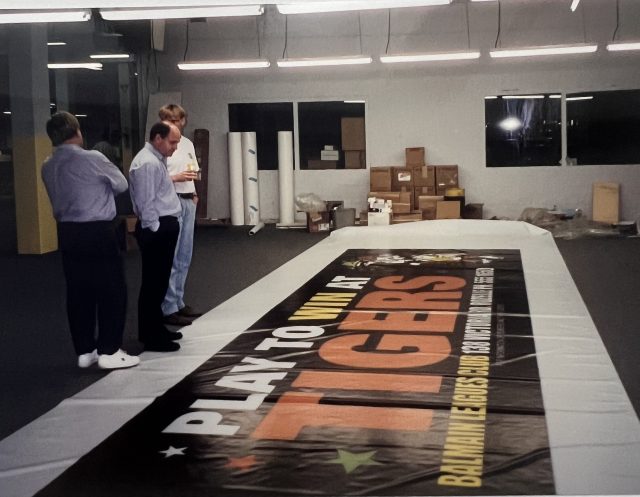
“I’m not going to tell you exactly what we did to get around it; they’d probably hunt me down.”
Another memorable incident for Ferrel was when a Pakistani client owed the company money and was procrastinating to pay.
When Ferrel visited his operations in India, he decided to make the trip over to Karachi to retrieve what this client owed him.
“They lied that they’d got the money, not realising I was in India and was only an hour and a half flight away. I landed there that afternoon, got a cab from the airport to the hotel, and he gave me a cheque. The deal was for cash,” Ferrel said.
“I was furious and got closer to him. The next thing I knew, I had a shotgun to my head. I ended up getting the money anyway, but the challenge then was getting US$50,000 through the Karachi airport. Those days, we had to be at the airport five hours before a flight, so I checked in and hid in the toilet.
“They kept calling my name and I exited the toilet at the last minute possible and told the airport staff I had been violently ill. They put me on a buggy and raced me through customs and onto the plane.
“On the plane, I thought to myself, ‘I have all this money on me, how am I going to manage when I disembark in India?’ Thankfully I had been going in and out of the country so often that the guy at customs knew me and let me through quickly.”
After six years in India, just as Ferrel was returning to Sydney from visiting its Chennai operations, tragedy struck. Ferrel knew something was off when Spicer was at the Sydney Airport to receive him.
“Warwick was at the airport and as soon as he saw me, he said ‘mate, go home and get changed because you’re getting back on a plane this afternoon to Chennai – the place is six metres under water,” Ferrel said.
“The Chennai site was backed onto a river and there had been huge storms. The banks had broken, affecting the entire industrial area including our factory. It was an absolute disaster.”
As nothing was salvageable, the company lodged an insurance claim, which he calls the biggest insurance payout in Chennai of that time, because Cactus Imaging was insured for loss of business as well.
Cactus Imaging saw no reason to rebuild the business, so it sold its stake in the joint venture and exited India. The Pakistani business also drifted off.
Through its time, Cactus Imaging serviced clients in other Asian countries as well, including Malaysia, Singapore, and Cambodia.
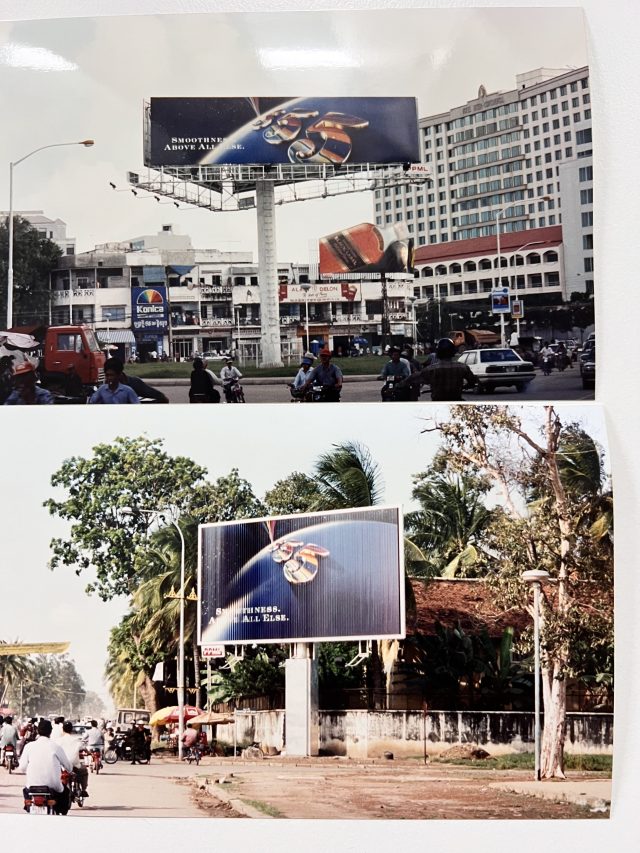
“When I was doing some work for a company called Sena Jaya in Singapore, its boss Simon Loong was talking to someone named Calvin Pereira in Cambodia – I had not even heard of the country at that time!” Ferrel said.
“Calvin was using MMT in Malaysia to print his billboards, so Simon suggested he use Cactus Imaging. Calvin was happy to meet me for a chat, so I jumped on a plane not knowing anything about Cambodia, apart from it being about two hours away from Singapore by flight.
“When I got on the plane, you wouldn’t believe it. I was the only person in civilian clothes. The rest were in army uniform. When we landed in Phnom Penh, it was right in the middle of a bloody coup!
“I disembarked the plane and didn’t have to clear customs or anything. There was a car at the bottom of the stairs, waiting for me. I got into the car and surprisingly ended up at the royal palace in Cambodia. Phnom Penh Media was owned by representatives of the royal family at that time, so I stayed at the palace and met with someone named Dien Douk, whose father was the King of Cambodia.”
Cactus Imaging still retains Phnom Penh Media as a client to today, with Ferrel and Douk becoming good friends – he was even invited to Douk’s wedding.
Read more in part two….
Comment below to have your say on this story.
If you have a news story or tip-off, get in touch at editorial@sprinter.com.au.
Sign up to the Sprinter newsletter


